Vegans get a lot of flak for our “crunchy” habits. One can either be put off by the teasing, or learn to take it with a grain of salt and a wide grin. I do the latter, not only because it’s a lot more pleasant than nursing a sense of indignation, but also because it would be disingenuous to do otherwise. After all, a solid majority of the foods I love to eat meet every popular definition of the word “crunchy.” Sprouts. Lentils. Raw kale. Hemp. Tempeh. Fermented veggies. Seaweed. To shrink from the label would be folly. So vive le crunchy, I say.
Today’s recipe is just about as crunchy as it gets. Spirulina dusted kale and quinoa? Yes indeed. This was today’s breakfast (I was in a savory mood), and it was as tasty as it was electric green. Though I typically reserve spirulina for sweeter recipes—raw cookies, bars, and smoothies (like my deep sea smoothie)—that all changed when I received my friend Courtney Pool’s wonderful Spirulina e-book, Spirulina Junkie, which I highly recommend to you all! The e-book contains 30 unique recipes showing readers how to incorporate spirulina into entrees, soups, and salads, along with desserts and smoothies. Since I read it, I’ve been partial to adding a little spirulina to salad dressings and salads. So why not quinoa?
The spirulina in this recipe is courtesy of Oriya Organics, makers of fine Superfood products including a protein powder and a green medley. I’m doing a full review later this week, but in the meantime, the Supergreen Medley contains spirulina, chlorella, wheat and barley grass, and it’s a perfect way to get a little extra green into any recipe. Hooray for that. Spirulina is a complete protein and contains Vitamin B-12, though please keep in mind that it is not a reliable source of the latter, and one would have to eat it quite plentifully for it to be a significant protein source. That said, a small, added boost is always helpful in a meal, and spirulina (and other freeze dried greens) contain many plants pigments that may be beneficial to us.
Making this recipe is incredibly simple. Here’s how.
Super Cruncy Spirulina Quinoa (vegan, gluten free, soy free)
Serves 2
2 cups cooked quinoa
1 cup shredded raw kale
Juice of 1/2 lemon
2 tsp hemp oil
Sea salt and pepper to taste
1 tsp spirulina or a green medley
1/2 cup diced zucchini
Mix all ingredients together in a large mixing bowl, and serve!
I love starting my day with something this green.
To create a balanced meal, I’d enjoy this dish with some avocado slices or a delicious nut/seed dressing. You could also add some hemp seeds for a source of healthy fat.
So the easy thing to do would be to wrap the post up, but I did feel the need to address the Guardian’s recent article on the problems with quinoa production for Bolivian farmers. The jist of the article is that vegan diets demand the importing of non-local crops that can negatively impact foreign economies. I found it disturbing, and it made me think a lot harder about how I might start to seek out quinoa brands that are sustainable and ethically produced. Do you guys have any tips for me? I’d love feedback from anyone who has researched the issue. This NPR article suggests that locally grown quinoa may soon be an option, though it did leave me with questions about how the seeds will be modified for North American soil.
At the same time, the original Guardian article was off base on a number of fronts. The author has ideologically aligned herself, it’s clear, with the local foods movement, and implies that vegans are the primary culprit behind ecological destruction from soy and/or grain farming. This tired and overly simplistic argument, so often wielded against vegans, nearly always fails to mention that the vast majority of soy—a staggering 97%, according to a 2006 UN report—is used for animal feed. As concerned as I am with the ethics of quinoa imports, I think it’s ludicrous to make a condemnation of vegan diet without mentioning the ethical violations of the meat industry, which is designed to unnecessarily bring millions of innocent animals into the world so that we can kill them. And one of these violations is the monopolization of soy for animal feed, rather than a crop that could be used to sustain human beings. The Guardian printed a response with similar sentiments.
Phew. On a totally different note, there is still time to RSVP for my Dinner with Kris event later this evening (7 pm EST) if you own a copy of Crazy Sexy Kitchen. Hope to chat with some of you!!
xo
This post may contain affiliate links. If you use these links to buy something I may earn a commission. Visit my privacy policy to learn more.
Ingredients: Quinoa
Dietary Preferences: Gluten Free, Soy Free, Tree Nut Free, Vegan
Recipe Features: 30 Minute or Less, Meal Prep

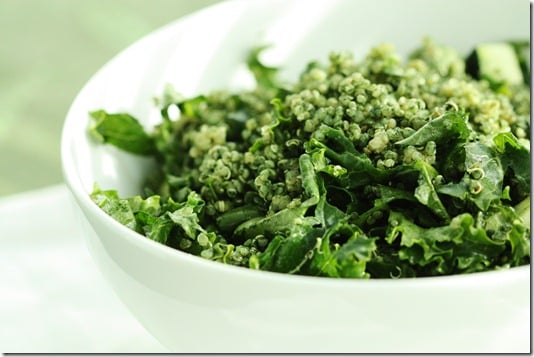
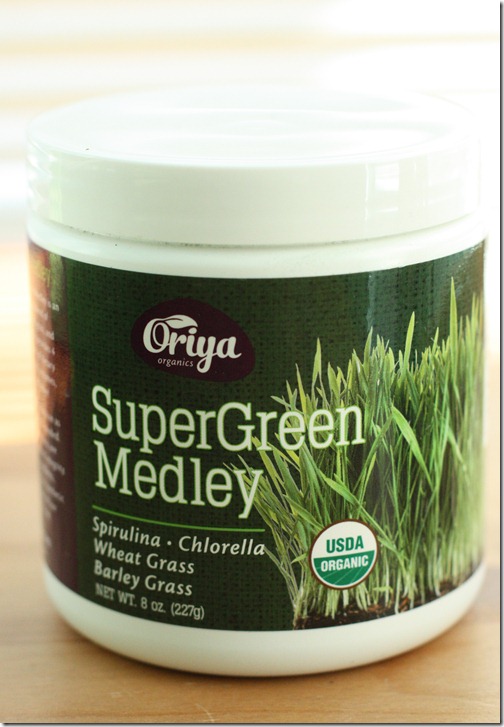
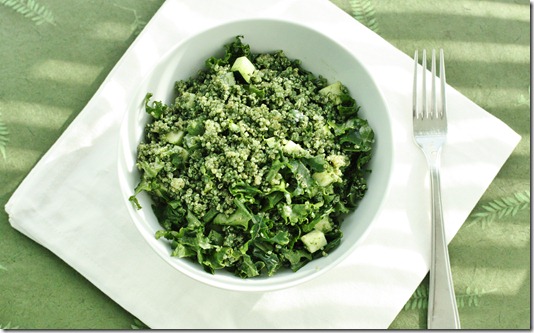
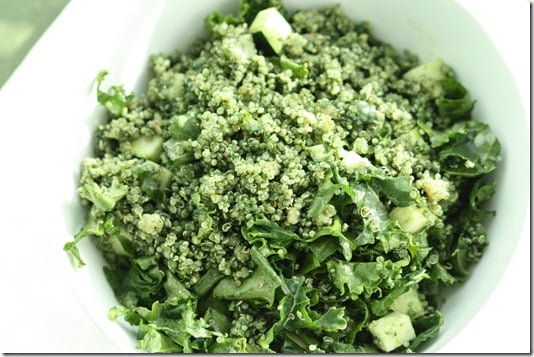
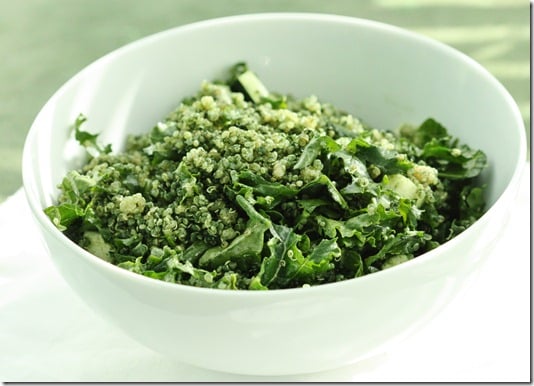


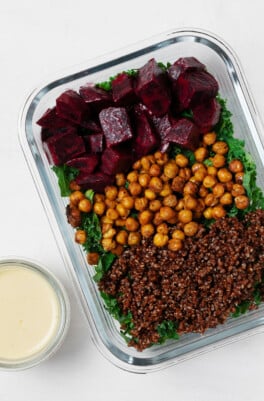
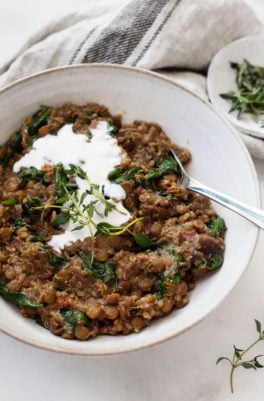
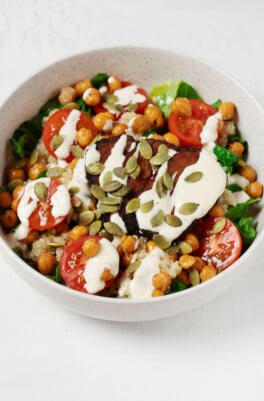
Leave a Comment
I found this Quinoa product: TruRoots. It’s a little more expensive but made in the USA.
I’m delighted that you are feeling more conscious of your food choice. its always a better go for maintaining good health.
(I get Canadian grown quinoa from Northern Quinoa Co. it’s grown in the prairies.. Found it by googling)
Hello!
I may have missed it in one or few of the comments but you can buy fair trade quinoa . The recipe looks amazing …!
Wow such a unique idea! I have just bought spirulina but I’m yet to use it; is the flavour hard to get used to in the likes of something like this salad?
Iam interested in a powder that has spirulina, chlorella, wheatgrass and barley grass, it sounds really good!
As always, your take on the issue is thoughtful and balanced Gena, and I always enjoy reading your thoughts on contentious topics! Thank you!
I like quinoa so much I bought a 25# bag of it online. Please check out this company called Alter Eco Foods. They profess to use fair trade, ethically farmed, organic,ect., all the good things we like about the foods we eat. Even if you don’t buy directly from them, I feel buying their products is a win-win. (I do not work for them, I try to buy fair trade when I can).
Hope this helps.
Karen G
I buy my quinoa and chocolate from them too, and I’ve heard they are very conscious of how their product is produced. I don’t work for them either. As for the wheat and barley grass, it isn’t worth the risk to eat either. However, some people with gluten intolerance can tolerate both. It’s a matter of degrees. I have gluten intolerance, and one vitamin I take has barley grass. I don’t have a reaction, but I can see where someone would.~~Dee
It’s interesting that this topic is coming into the limelight just now… When I went from vegetarian for health to vegan for animal welfare, the issues of environmental sustainability and food wastage had barely entered my consciousness. I just recently really started reading and thinking about it, and I actually wrote an article for the Healthy Living Blogs website about eating animals and the world food shortage!
Interestingly I have come across a number of people who are not interested in veganism for animal welfare, but for the environment and to provide adequate food for humans, they were actually quite receptive to the idea. I’m beginning to think that a big part of it is that many meat-eaters feel an entitlement to eat animals (top-of-the-foodchain arguments come to mind) and don’t want to feel guilty about causing suffering, so become quite defensive, but when faced with these other issues, can see more of a personal gain/benefit/risk, so are willing to consider reducing meat intake.
After reading through the comments, I’ve tagged a number of links to read later, I think there’s a lot more to know. I personally feel that whether vegan or omnivore, making any choice about food will have an effect on someone, somewhere. So I try to just make sure that each choice I make has a positive effect, or at least the least possible amount of harm! But while doing that, I think it’s acceptable to find a personal level of ‘effort’ and settling with a happy medium – such as checking the country of origin while shopping, but still being able to enjoy a vegan gelato at a restaurant without querying the source of every ingredient.
As always, your take on the issue is thoughtful and balanced Gena, and I always enjoy reading your thoughts on contentious topics! Thank you!
I saw the Guardian article as well and think it missed a big point – that being the structure within which all our food choices are forced to operate. Stigmatizing one group of consumers will not fix a problem that is caused by sellers/manufacturers and felt by small scale/local/etc producers. Who’s to say vegans or health nuts or whatever label you use wouldn’t be willing to pay more for a product that allows those who grow and harvest it to live better lives? Do sellers/manufacturers ever ask that question? No. The assumption is that everyone wants every product to be as cheap as possible, with no acknowledgement of the consequences.
As a student I do appreciate that healthy foods are within my budget. But I can still afford to pay a few dollars more for products I enjoy, like quinoa or coffee. I know not everyone can, but the author of the Guardian piece seemed to target people who can.
The situation is messy and complicated. But pointing fingers rarely helps.
Sorry this doesn’t answer your question – I’ve been wanting to have a conversation about this article since it came out! I’m curious as to what other people here think?
Here my two cents…
A few months ago, my local health food store had a quinoa sale. We bought 40 packages at the price of 20. So we have 20 kg quinoa in our pantry… and I don’t feel guilty one bit.
The point of the article is to demonise vegans, vegetarians and, more broadly, those who can afford to pay more for their food and think that balanced eating is paramount to good health. Like healthy eating is a whim of people with money.
But what about coffee? Coffee is one of the most sprayed crops in the world, plantation workers are paid a pittance (if they are paid at all, there are case of semislavery), it has little to no nutritional value and it takes a lot of land which could be used to grow crops to be consumed locally instead of importing from abroad. Coffee made in the developed world (I can only think Hawaii) is much more expensive and it can be called a luxury product or at least one that is not consumed on a regular basis. The same could be said for tea and cacao.
The problem is that only a tiny part of the population eats quinoa while a much larger one drinks coffee (I do not know many people who don’t drink coffee, but I do know many who drink up to 10 cups a day) so the impact of quinoa export on Andean food self sufficiency is dwarfed by the giant impact of coffee in the whole world.
And last but not least quinoa does require little to no pesticides, so it’s almost always organic and has a minimal environmental impact.
Great point regarding coffee, tea, and cacao. I don’t think bringing awareness to new issues in the food system is a bad thing, and I am lucky to have access to organic, fair trade quinoa in bulk to purchase – which I do, even though it’s more expensive. But there are much, MUCH larger issues surrounding our food system that are hurting more people in the US and globally than quinoa. Coffee, tea, and chocolate are great examples; tomatoes made the news in the last few years because of Barry Estabrook’s Tomatoland; inhumane animal and worker treatment are rampant….I’m not saying that we should ignore the quinoa issue, because that would be irresponsible. But I also think we need to be sure we don’t miss the forest for the trees.
I went vegan purely as a vague health idea several months ago. In my search for recipes, I found your site (as well as a few others) and you have opened my eyes to so many new things. It never would have occurred to me even 6 months ago to be concerned about where quinoa came from and what the effect of my buying it had. My passion and desire to make even a tiny difference grows as I delve deeper into the causes and effects our actions have. I just want to say thank you for helping me in this journey.
Sarah,
I can’t tell you how much it means to me to read comments like this. Thank you so , so much. I’m delighted that you are feeling more conscious of your food choices.
xo
I am always looking for new ways to eat spirulina.This recipe is really innovative and just what I’ve been looking for. Thanks!
I’m looking forward to the product review for the super green medley. I am interested in a powder that has spirulina, chlorella, wheatgrass and barley grass, it sounds really good!
When I was growing up we referred to the hippie types as “Granola”. ..
I’ve been seeing the news about Quinoa and worrying about another choice that I had assumed was good before knowing the whole truth. It’s so important to remember that everything in this universe is connected and we have to be careful when labeling things before doing our research (plants, animals and people all included).
I too saw the Guardian article and was concerned, both by the effects of Western consumption of quinoa and by the author’s attack on vegans! As has been previously mentioned, it’s not just vegans who eat quinoa, and monocropping of things like corn and soy in the U.S. is not something vegans should be blamed for. Corn and soy are monocropped because they are crops that can be grown over much of the U.S. and give a lot of bang for one’s buck. Most of the corn is not for human consumption; it’s “cattle corn”, and is used in animal feed, ethanol, corn syrup, plastics, etc. Soy is used extensively in animal feed as well, and is also in many packaged products.
I understand that the author is advocating eating more local foods, but there are many vegans who do so, and eating entirely local is as difficult for non-vegans as it is for vegans. And eating local does not solve all of the problems with our food system. My thesis paper is on oil usage in factory farms, and not all of that oil usage is in transportation, showing that local is not necessarily the ultimate solution.
I hadn’t seen the term crunchy refer to hippie tendencies until this week when Sayward of Bonzai Aphrodite, and now you, used it. Perhaps it is an American thing to use it in such a context?
I am lucky to have access to locally grown organic quinoa in Australia (Kindred Organics in Tasmania). It definitely concerns me that quinoa’s rise in popularity amongst foodie types (and certainly not just vegans!) will make the ‘grain’ cost prohibitive for those cultures for which it is/was a staple food.
I agree with your response to another comment that being vegan isn’t the most we can do; it’s the least we can do. Veganism grows from a place of concern and compassion in our hearts and minds, and these considerations should extend to fellow humans, as well as animals and the environment.
As someone with Celiac Disease, I am not sure if this recipe should be labeled as gluten-free. Though it does not carry your expected form of wheat (like flour), I was under the impression both wheat grass and barely grass were off-limits. if you have any additional insights, I would love to hear it!
Just trying to keep other celiacs out there safe! love your blog and creative approach to food 🙂
Kelly,
I’ve always been assured that both were safe! But that was often by makers of products, so I’m sorry if I’m in the wrong here. Welcome any input from readers; if this is bad labeling, I’ll remove the label 🙂
G
I posted about that guardian article yesterday, it really made me mad how badly written and researched the writers arguments were! I’ve never thought to use spirulina in savoury dishes, sounds interesting.
Yum, I recently got hold of a nice similar green mix in the UK so look forward to trying this recipe 🙂
As for the quinoa article I definitely take issue with the attack on vegans but with regard to quinoa would recommend this article for a perspective from somebody actually seeing the situation first hand in South America.
http://bearwitnesspictures.blogspot.ca/2012/11/an-open-letter-to-npr-regarding-quinoa.html
Wow. Thanks, Emma. This is fascinating — and it certainly puts things into a different relief! I hope to see more of this unfold.
The greener the better! Looks delicious 🙂 I’m looking forward to a more in depth review of the Green Medley.
And thank you for your thoughts on the quinoa issue. I can always trust that you are on top of all these things so I can share with others! The conversation after is always an added bonus.
Hmm, thanks for shedding light on the issue with non-local quinoa. I’m curious to read more about it. Thanks for the links and the info. 🙂
I discussed the same Guardian article on my blog today, too. I agree that the author oversimplified the problem, but it was a nice reminder to me that food choices are complicated and deserve thorough consideration in order to ensure that they are ethical and realistic for each person’s lifestyle.
I look forward to your full review and learning more about Spirulina–I’m not very familiar with it, but always curious to try new things!
I found it very odd that the Guardian author demonized vegans, when quinoa has become so widely popular in all sorts of elite health-conscious circles in the U.S. I am a carnivore but eat a lot of quinoa, and I am certainly not alone there. Like you, I also want to rethink that choice and consider sourcing options.
More broadly, I think it is extraordinarily important for us to scrutinize the moral economies embedded in our food systems from all angles. That means meat-eaters thinking about soy, vegans thinking about quinoa, people who emphasize health and convenience thinking about the labor practices and packaging waste of places like Trader Joes, broad consideration of farmworkers, questions about energy and transport, discourse about animal rights, and attention paid to the economic implications of our decisions for other markets and people differently positioned within our own markets. All of it.
Basically, when we can get past just placing petty blame on one consumer group or another and instead begin to think deeply instead about the implications of the industrial ag complex for a variety of vulnerable groups (farmworkers, animals, people living in poverty in places like Bolivia but also here in the US), I think we’ll make more progress.
I totally agree, Katelyn. I’ve come in recent years to realize that, while veganism is a hugely important part of conscious eating for me, it’s only the beginning. It’s not the most I can do; it’s the LEAST I can do. And these webs are often very complex.
When I first learned about the Bolivia-quinoa situation it really prompted me to limit my quinoa purchasing and woke me up to seeking ethically sourced grains again (after visits to various rice paddies in Thailand a few years ago I got very passionate…). It sucks but essentially quinoa and I are no longer regular partners, although on occasion I will buy one of the “ethically sourced” brands on my store’s shelf, maybe a few times a year, and I won’t go all bananas if it’s served to me.
Love the idea of putting spirulina on! I’m about to make lunch, gonna try this!
Wow Gena this really sounds delicious! I have been looking for creative ways to incorporate green powders into recipes (other than smoothies). I will have to try this one out! Can’t wait!